What is Poha
The word Poha (plural: pohe) refers to 2 things – the first one is the ingredient flattened rice itself and the second one is the Poha recipe or the dish that is made with this particular ingredient. Easy to remember, make and tastes fab. No confusions there, right? As mentioned above, both the ingredient and dish are a super common feature in Maharashtra, as well as then neighboring Indian states of Madhya Pradesh, Gujarat and Goa too. It even reaches the south in Karnataka and Telangana, north in Rajasthan and east in West Bengal and Odisha. The dish is also consumed as a snack in these states. In Maharashtra, the 2 customary variations of the Poha recipe are either made with onions or both onions and potatoes. Kanda Poha (with onions) and Kanda Batata Poha (with onions and potatoes) is what they are locally known as. Here you’ll find the recipe featuring both onions and potatoes, which you can further modify as per what suits your taste buds.
About Kanda Poha Recipe
The Marathi word ‘kanda’ means onion and ‘poha’ is flattened rice or beaten rice. Hence, when in Maharashtra, you’ll be greeted by the terms Kanda Poha or Kanda Pohe. This is one of the simple ways to bring in an extra element to the plain Poha recipe. I always add red onions which impart a sweetish taste to the dish. If you are not a fan of this variety of onions, use either white or yellow onions. As I have mentioned above, I also add potatoes in my recipe. So, imagine flattened rice with both onions and potatoes. Quite the double bonanza, a feast for your palate. Though you can omit adding potatoes if you prefer. I also like the flavor of roasted peanuts and coconut in my version. So, I add them both in this recipe. This healthy and filling dish is also easy to digest. My perfect way of enjoying it is with a cup of hot tea as a satisfied morning meal. Whatever way, the dish turns out to be a marvelous one. Super simple, yet flavorful and filling. There are multiple ways in which you can modify this recipe. Each family also has their special recipe. Generally, it is either with potatoes, onions or both. I add sautéed potatoes, you can opt for boil or steam ones.
How to make Poha Recipe
Preparation
- Pick 1.5 cups thick or medium-thick poha first. Rinse them in clean running water in a strainer or colander twice or thrice. Rinsing in fresh clean water softens them as they absorb water. Make sure not to overdo the rinsing. This will make them mushy and pasty. 2. Sprinkle ¼ teaspoon turmeric powder, 1 teaspoon sugar (or as required) and salt according to taste on the rinsed poha flakes. 3. Gently mix with your hands or with a spoon.
- Dry roast 2 tablespoons peanuts in a heavy pan on medium-low heat until they become crunchy. Stir often for even cooking of the peanuts. The peanuts should be roasted well and must not have any rawness in them. Roast till they become crunchy and have a few blisters on their skins. Once they have roasted well enough, remove them from the pan and set aside in a plate. Tip: If you like, you can also opt to pan-fry the peanuts in 1 tablespoon of oil. Note: If you have nut allergy or do not like peanuts, simply choose to omit adding them. As a variation, you can also add cashews if you prefer.
Sauté Potatoes
- Peel 1 medium to large size potato and chop into small cubes. In the same heavy kadai or pan, heat 2 to 2.5 tablespoons oil. Sauté the potatoes in medium hot oil. Make sure to cut them in small cubes or else they will take more time to cook.
- Sauté them until light golden and crisp. Stir them often while sautéing. Ensure that the potatoes are cooked soft and tender. They should not be undercooked.
- Once the potatoes become light golden and crisp, remove them with a slotted spoon draining the extra oil. Keep aside with the roasted peanuts.
Sauté Spices & Onions
8. In the same kadai, there will be some oil left. Add ½ teaspoon mustard seeds to the hot oil. If there is no oil, add 1 tablespoon oil and heat it gently.
9. When the mustard seeds splutter, add ½ teaspoon cumin seeds.
10. When the cumin seeds splutter, add ⅓ cup finely chopped onions. Sauté the onions until they soften and become translucent.
11. Now, add 8 to 9 curry leaves (medium to large size), 1 teaspoon chopped green chilies and the roasted peanuts. Mix well on low heat.
Make Kanda Poha
12. Add the poha. 13. Mix gently with the rest of the ingredients. 14. Add the potatoes and mix very well. Cover the pan tightly with a lid and steam the poha for about 2 minutes on low heat. Remove the lid and check the taste. If required, add more salt and sugar. Tip: When you add the potatoes, if the poha flakes look dry to you, sprinkle about 1 to 2 tablespoons of water all over. Stir to mix gently and cover the pan with lid and steam for 2 to 3 minutes on a low heat. 15. Garnish with 2 to 3 tablespoons chopped coriander leaves and 2 to 3 tablespoons grated fresh coconut (optional). 16. Mix gently. 17. Serve Kanda Poha hot or warm with lemon wedges. The lemon juice has to be squeezed on poha before eating it. Alternatively, you can also follow this method. When the poha recipe is cooked, drizzle about 1 to 2 teaspoons lemon juice on it. Mix well with the poha, garnish with grated coconut and coriander leaves and serve. You can also top your poha with sev (fine fried gram flour vermicelli) or farsan/mixture if you like.
Expert Tips
Poha, The Ingredient
Flattened rice, beaten rice or parched rice are different words that denote the ingredient Poha. It is made by first parboiling and then flattening the rice grains. This results in thin, crisp and dry rice flakes that can be easily broken or crumbled. Poha in other Indian regional languages – pauwa (Hindi), paunva (Gujarati), chira (Bengali), phov (Konkani), aval (Tamil and Malayalam), atukulu (Telugu) and avalakki (Kannada). It is easily available in India. But outside India, it can be bought from an Indian/Asian grocery store or online. Primarily, there are 2 to 3 types of flattened rice sold in the markets – one which is papery thin and the other which is a thick variety and medium-thick variant. While both can be used interchangeably in many recipes, this Poha recipe uses the thicker one. There are other varieties based on the color. So, we also have red or brown flattened rice made from red or brown rice, respectively. You can make this recipe with either of these as well. Beaten rice absorbs liquids like water or milk when it is soaked in them. Once soft, you can consume it raw or cook it a bit. Also, recipes with flattened rice require little to no cooking. Quick snacks like Poha Chivda can also be made by roasting or frying this ingredient.
Pohe, The Dish
This light and nutritious breakfast dish is made by mixing beaten rice with spices, curry leaves and seasonings. In addition to this, onions, potatoes or both onions and potatoes can also be added. You can say that the Poha recipe is a ridiculously easy one. To increase the nutritional profile, you can also perk up this recipe with grated carrots, boiled green peas, roasted peanuts, cashews and garnish with a generous amount of fresh coriander leaves and grated fresh coconut. When adding potatoes, you can either fry or steam them. Along with Kanda Poha, another very unique variation of this specific dish is the Indori Poha which is a famous street food from Indore, Madhya Pradesh. It has fennel seeds too. Special toppings are Indori sev, masala boondi, fresh pomegranate pearls, etc. Apart from Idli, Dosa and Upma, Poha has been a constant in my life since my childhood years. My mother loved making it for breakfast, sometimes for brunch too. Please be sure to rate the recipe in the recipe card or leave a comment below if you have made it. For more vegetarian inspirations, Sign Up for my emails or follow me on Instagram, Youtube, Facebook, Pinterest or Twitter. Besan Chilla Recipe (Besan ka Cheela) Rava Idli (Easy and No Fermentation) Aloo Paratha Recipe (Homemade Punjabi Style) Rava Dosa Recipe (South Indian Suji ka Dosa) This Poha Recipe from the archives was first published in August 2013. It has been updated and republished on March 2023.
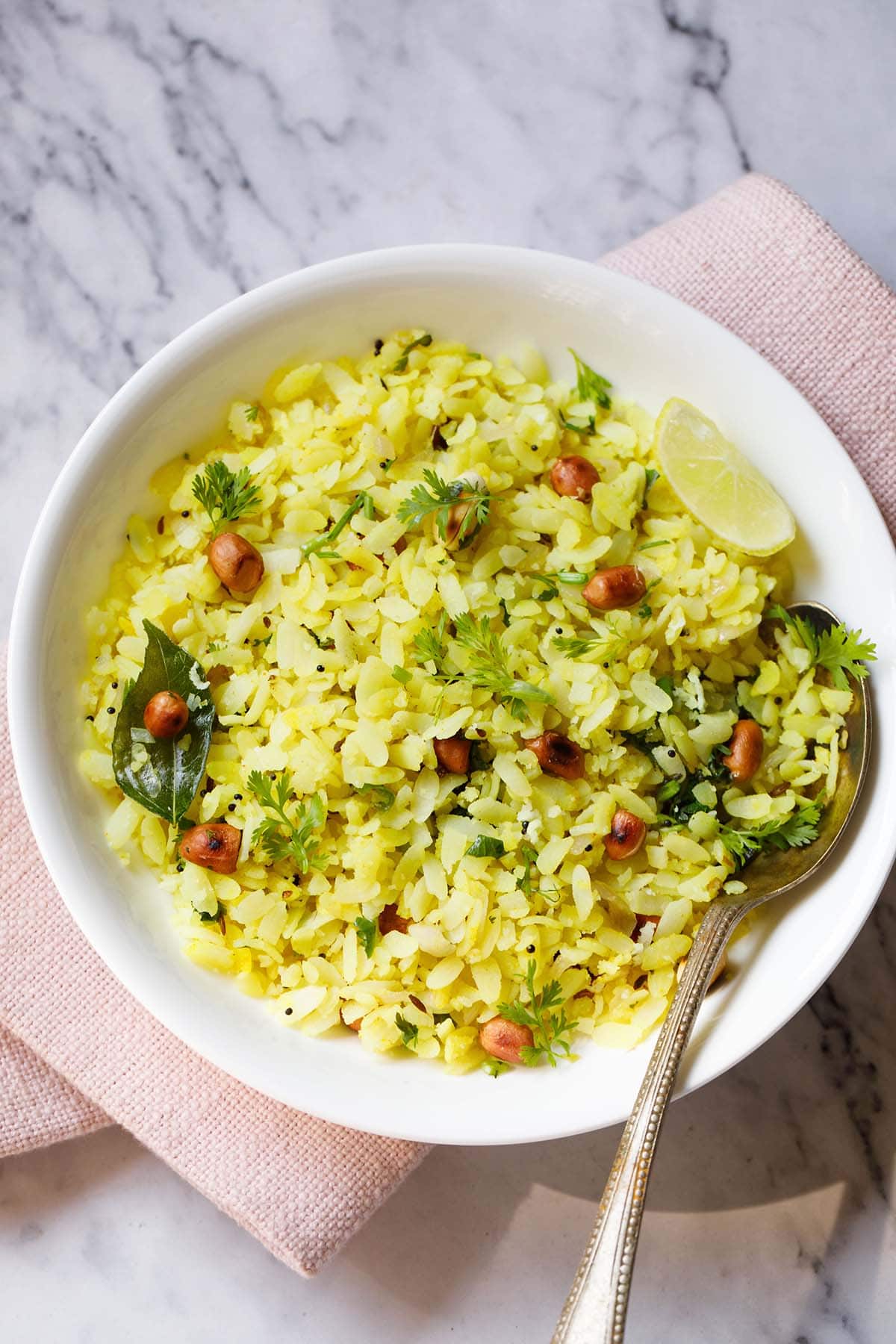
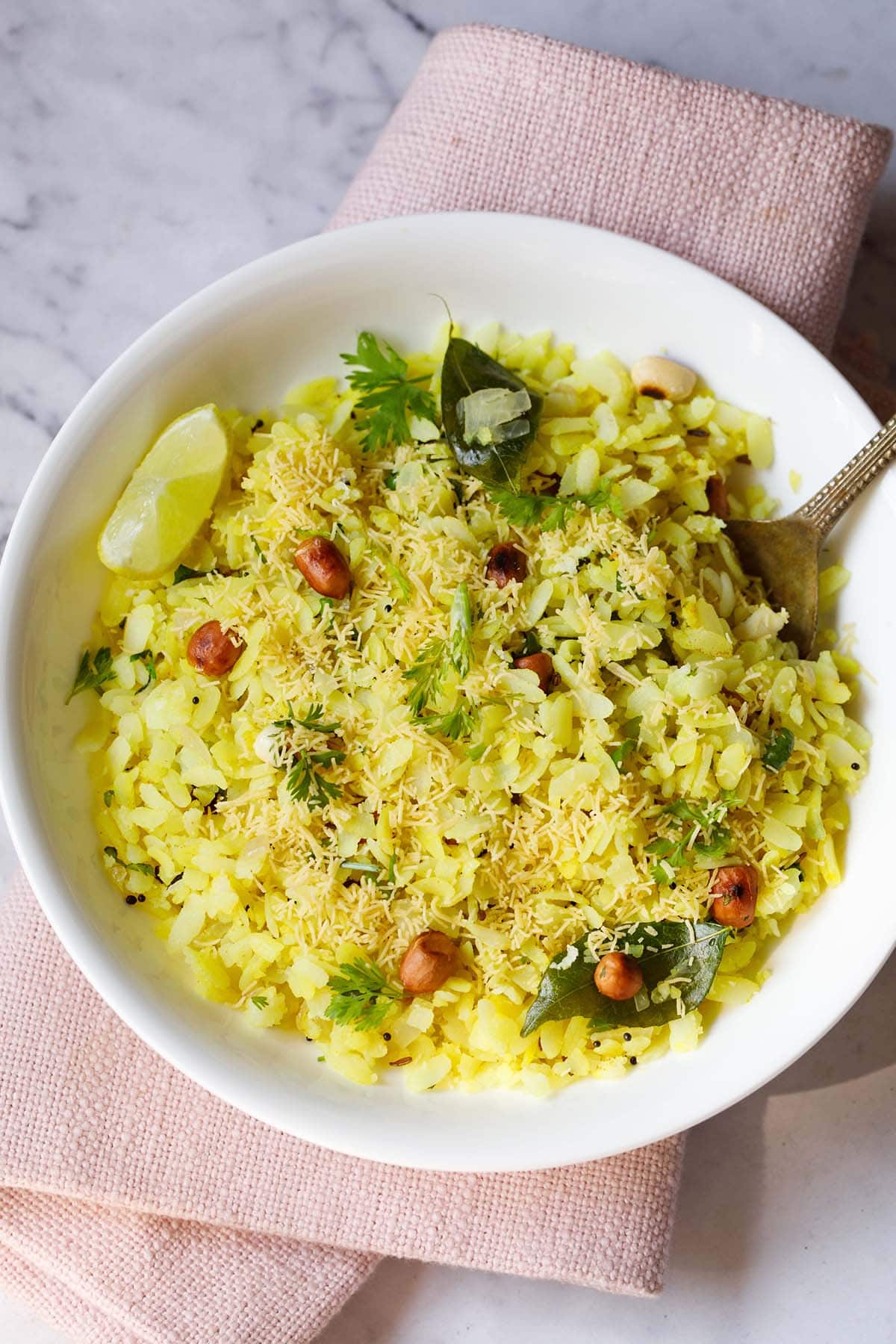
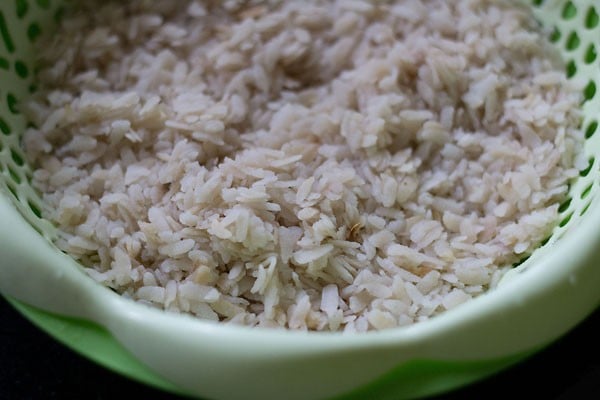
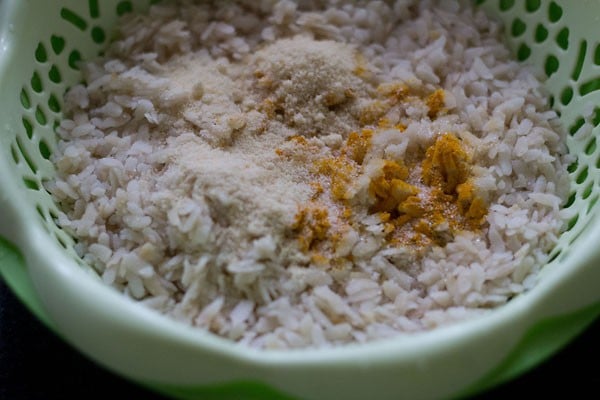
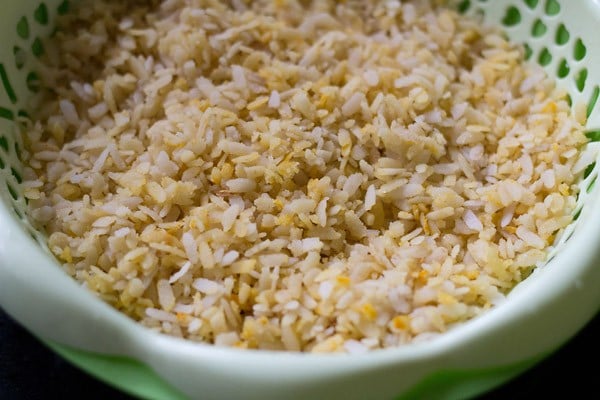
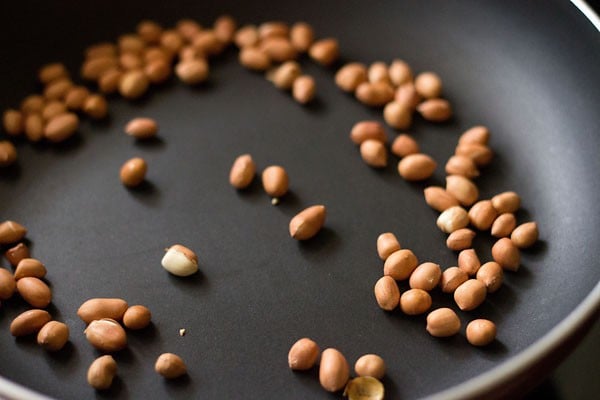
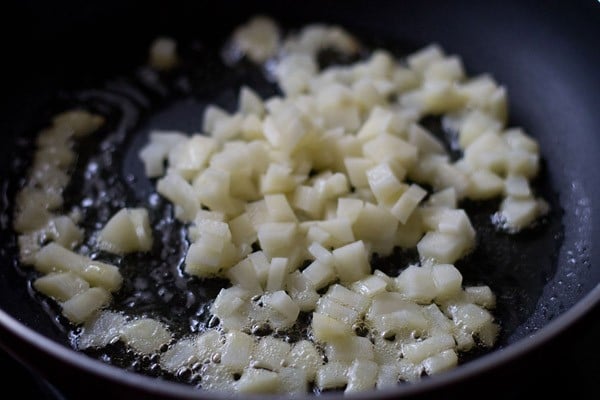

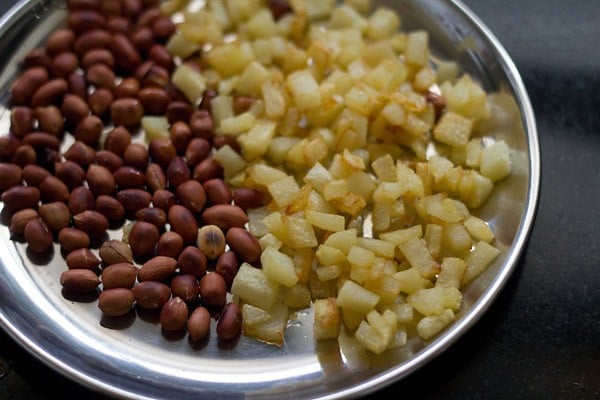

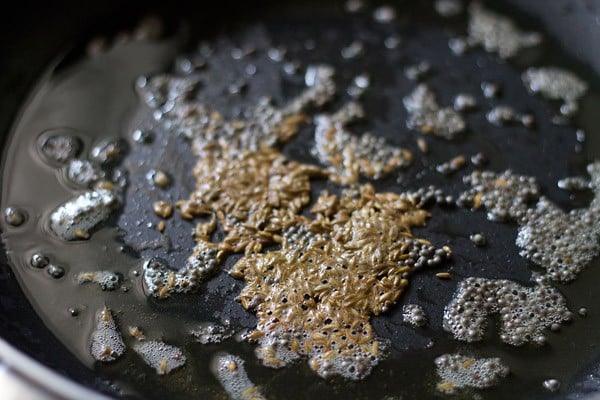
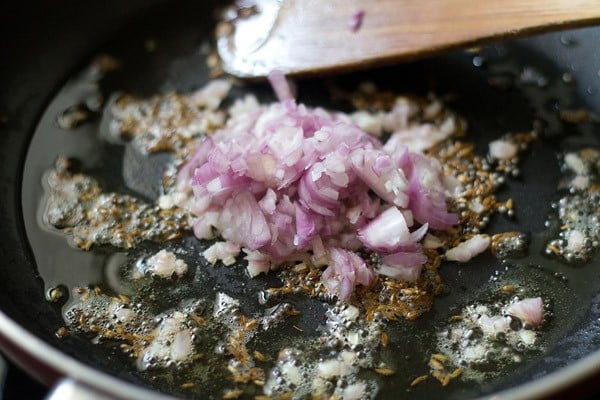
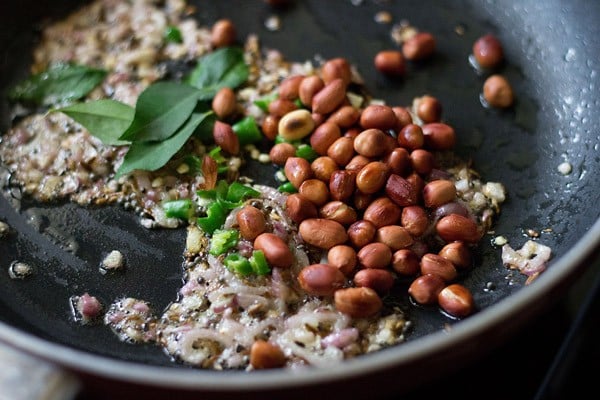
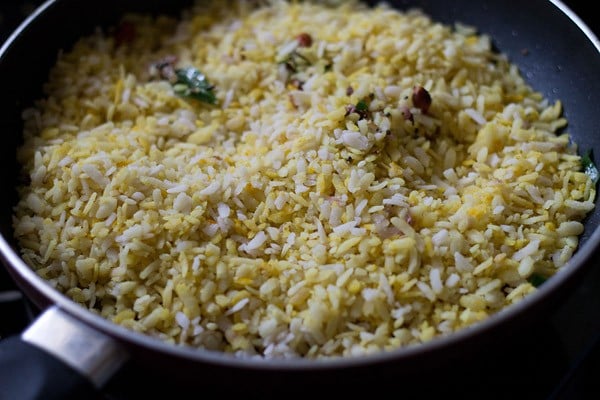


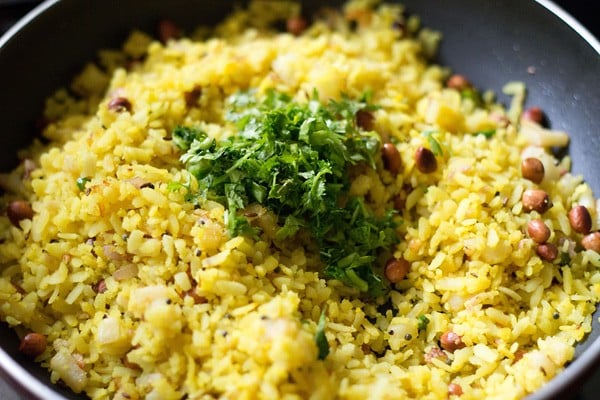
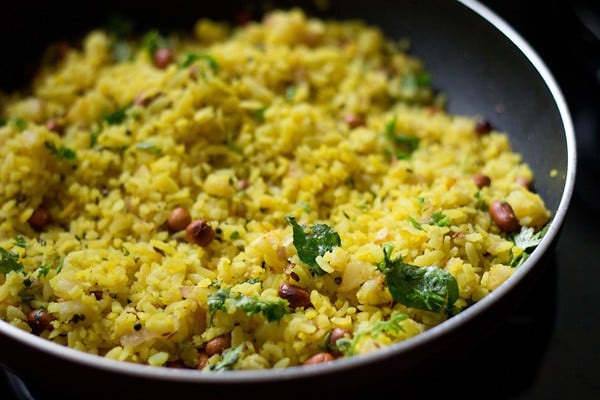
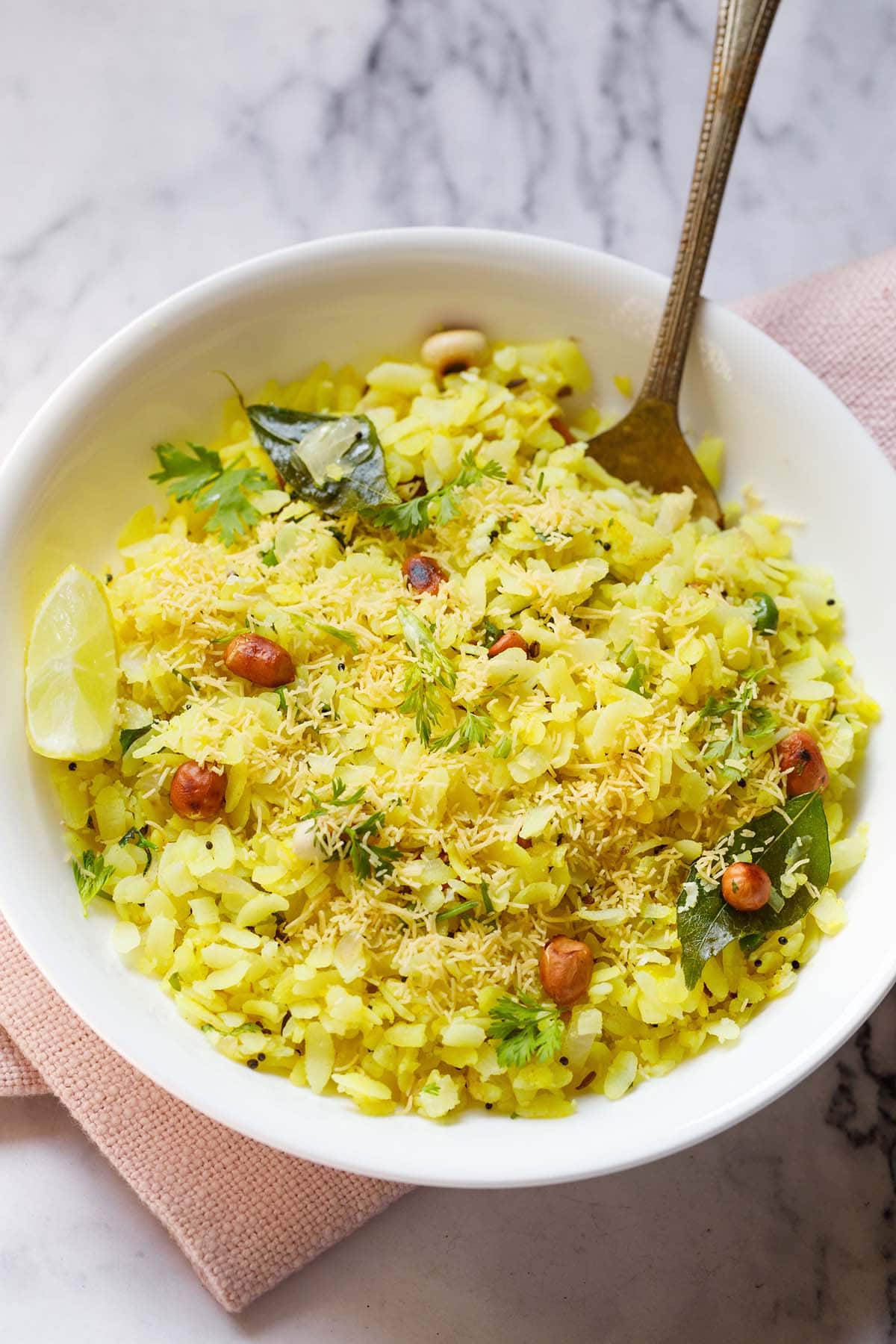
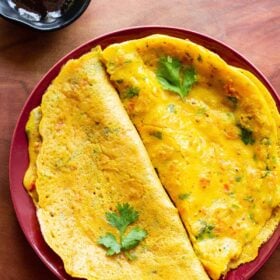
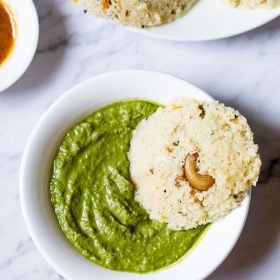
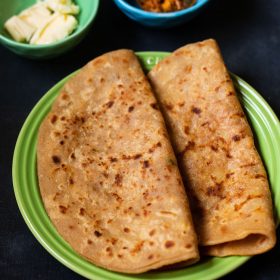
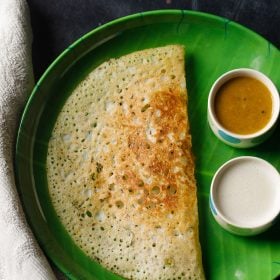
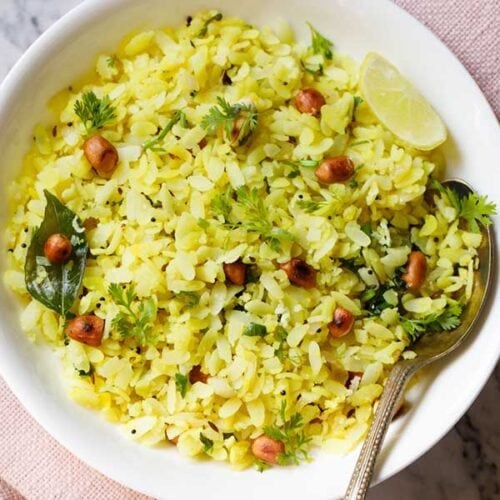
title: “Poha Recipe Maharashtrian Kanda Poha " ShowToc: true date: “2024-10-25” author: “Kevin Gossard”
What is Poha
The word Poha (plural: pohe) refers to 2 things – the first one is the ingredient flattened rice itself and the second one is the Poha recipe or the dish that is made with this particular ingredient. Easy to remember, make and tastes fab. No confusions there, right? As mentioned above, both the ingredient and dish are a super common feature in Maharashtra, as well as then neighboring Indian states of Madhya Pradesh, Gujarat and Goa too. It even reaches the south in Karnataka and Telangana, north in Rajasthan and east in West Bengal and Odisha. The dish is also consumed as a snack in these states. In Maharashtra, the 2 customary variations of the Poha recipe are either made with onions or both onions and potatoes. Kanda Poha (with onions) and Kanda Batata Poha (with onions and potatoes) is what they are locally known as. Here you’ll find the recipe featuring both onions and potatoes, which you can further modify as per what suits your taste buds.
About Kanda Poha Recipe
The Marathi word ‘kanda’ means onion and ‘poha’ is flattened rice or beaten rice. Hence, when in Maharashtra, you’ll be greeted by the terms Kanda Poha or Kanda Pohe. This is one of the simple ways to bring in an extra element to the plain Poha recipe. I always add red onions which impart a sweetish taste to the dish. If you are not a fan of this variety of onions, use either white or yellow onions. As I have mentioned above, I also add potatoes in my recipe. So, imagine flattened rice with both onions and potatoes. Quite the double bonanza, a feast for your palate. Though you can omit adding potatoes if you prefer. I also like the flavor of roasted peanuts and coconut in my version. So, I add them both in this recipe. This healthy and filling dish is also easy to digest. My perfect way of enjoying it is with a cup of hot tea as a satisfied morning meal. Whatever way, the dish turns out to be a marvelous one. Super simple, yet flavorful and filling. There are multiple ways in which you can modify this recipe. Each family also has their special recipe. Generally, it is either with potatoes, onions or both. I add sautéed potatoes, you can opt for boil or steam ones.
How to make Poha Recipe
Preparation
- Pick 1.5 cups thick or medium-thick poha first. Rinse them in clean running water in a strainer or colander twice or thrice. Rinsing in fresh clean water softens them as they absorb water. Make sure not to overdo the rinsing. This will make them mushy and pasty. 2. Sprinkle ¼ teaspoon turmeric powder, 1 teaspoon sugar (or as required) and salt according to taste on the rinsed poha flakes. 3. Gently mix with your hands or with a spoon.
- Dry roast 2 tablespoons peanuts in a heavy pan on medium-low heat until they become crunchy. Stir often for even cooking of the peanuts. The peanuts should be roasted well and must not have any rawness in them. Roast till they become crunchy and have a few blisters on their skins. Once they have roasted well enough, remove them from the pan and set aside in a plate. Tip: If you like, you can also opt to pan-fry the peanuts in 1 tablespoon of oil. Note: If you have nut allergy or do not like peanuts, simply choose to omit adding them. As a variation, you can also add cashews if you prefer.
Sauté Potatoes
- Peel 1 medium to large size potato and chop into small cubes. In the same heavy kadai or pan, heat 2 to 2.5 tablespoons oil. Sauté the potatoes in medium hot oil. Make sure to cut them in small cubes or else they will take more time to cook.
- Sauté them until light golden and crisp. Stir them often while sautéing. Ensure that the potatoes are cooked soft and tender. They should not be undercooked.
- Once the potatoes become light golden and crisp, remove them with a slotted spoon draining the extra oil. Keep aside with the roasted peanuts.
Sauté Spices & Onions
8. In the same kadai, there will be some oil left. Add ½ teaspoon mustard seeds to the hot oil. If there is no oil, add 1 tablespoon oil and heat it gently.
9. When the mustard seeds splutter, add ½ teaspoon cumin seeds.
10. When the cumin seeds splutter, add ⅓ cup finely chopped onions. Sauté the onions until they soften and become translucent.
11. Now, add 8 to 9 curry leaves (medium to large size), 1 teaspoon chopped green chilies and the roasted peanuts. Mix well on low heat.
Make Kanda Poha
12. Add the poha. 13. Mix gently with the rest of the ingredients. 14. Add the potatoes and mix very well. Cover the pan tightly with a lid and steam the poha for about 2 minutes on low heat. Remove the lid and check the taste. If required, add more salt and sugar. Tip: When you add the potatoes, if the poha flakes look dry to you, sprinkle about 1 to 2 tablespoons of water all over. Stir to mix gently and cover the pan with lid and steam for 2 to 3 minutes on a low heat. 15. Garnish with 2 to 3 tablespoons chopped coriander leaves and 2 to 3 tablespoons grated fresh coconut (optional). 16. Mix gently. 17. Serve Kanda Poha hot or warm with lemon wedges. The lemon juice has to be squeezed on poha before eating it. Alternatively, you can also follow this method. When the poha recipe is cooked, drizzle about 1 to 2 teaspoons lemon juice on it. Mix well with the poha, garnish with grated coconut and coriander leaves and serve. You can also top your poha with sev (fine fried gram flour vermicelli) or farsan/mixture if you like.
Expert Tips
Poha, The Ingredient
Flattened rice, beaten rice or parched rice are different words that denote the ingredient Poha. It is made by first parboiling and then flattening the rice grains. This results in thin, crisp and dry rice flakes that can be easily broken or crumbled. Poha in other Indian regional languages – pauwa (Hindi), paunva (Gujarati), chira (Bengali), phov (Konkani), aval (Tamil and Malayalam), atukulu (Telugu) and avalakki (Kannada). It is easily available in India. But outside India, it can be bought from an Indian/Asian grocery store or online. Primarily, there are 2 to 3 types of flattened rice sold in the markets – one which is papery thin and the other which is a thick variety and medium-thick variant. While both can be used interchangeably in many recipes, this Poha recipe uses the thicker one. There are other varieties based on the color. So, we also have red or brown flattened rice made from red or brown rice, respectively. You can make this recipe with either of these as well. Beaten rice absorbs liquids like water or milk when it is soaked in them. Once soft, you can consume it raw or cook it a bit. Also, recipes with flattened rice require little to no cooking. Quick snacks like Poha Chivda can also be made by roasting or frying this ingredient.
Pohe, The Dish
This light and nutritious breakfast dish is made by mixing beaten rice with spices, curry leaves and seasonings. In addition to this, onions, potatoes or both onions and potatoes can also be added. You can say that the Poha recipe is a ridiculously easy one. To increase the nutritional profile, you can also perk up this recipe with grated carrots, boiled green peas, roasted peanuts, cashews and garnish with a generous amount of fresh coriander leaves and grated fresh coconut. When adding potatoes, you can either fry or steam them. Along with Kanda Poha, another very unique variation of this specific dish is the Indori Poha which is a famous street food from Indore, Madhya Pradesh. It has fennel seeds too. Special toppings are Indori sev, masala boondi, fresh pomegranate pearls, etc. Apart from Idli, Dosa and Upma, Poha has been a constant in my life since my childhood years. My mother loved making it for breakfast, sometimes for brunch too. Please be sure to rate the recipe in the recipe card or leave a comment below if you have made it. For more vegetarian inspirations, Sign Up for my emails or follow me on Instagram, Youtube, Facebook, Pinterest or Twitter. Besan Chilla Recipe (Besan ka Cheela) Rava Idli (Easy and No Fermentation) Aloo Paratha Recipe (Homemade Punjabi Style) Rava Dosa Recipe (South Indian Suji ka Dosa) This Poha Recipe from the archives was first published in August 2013. It has been updated and republished on March 2023.























